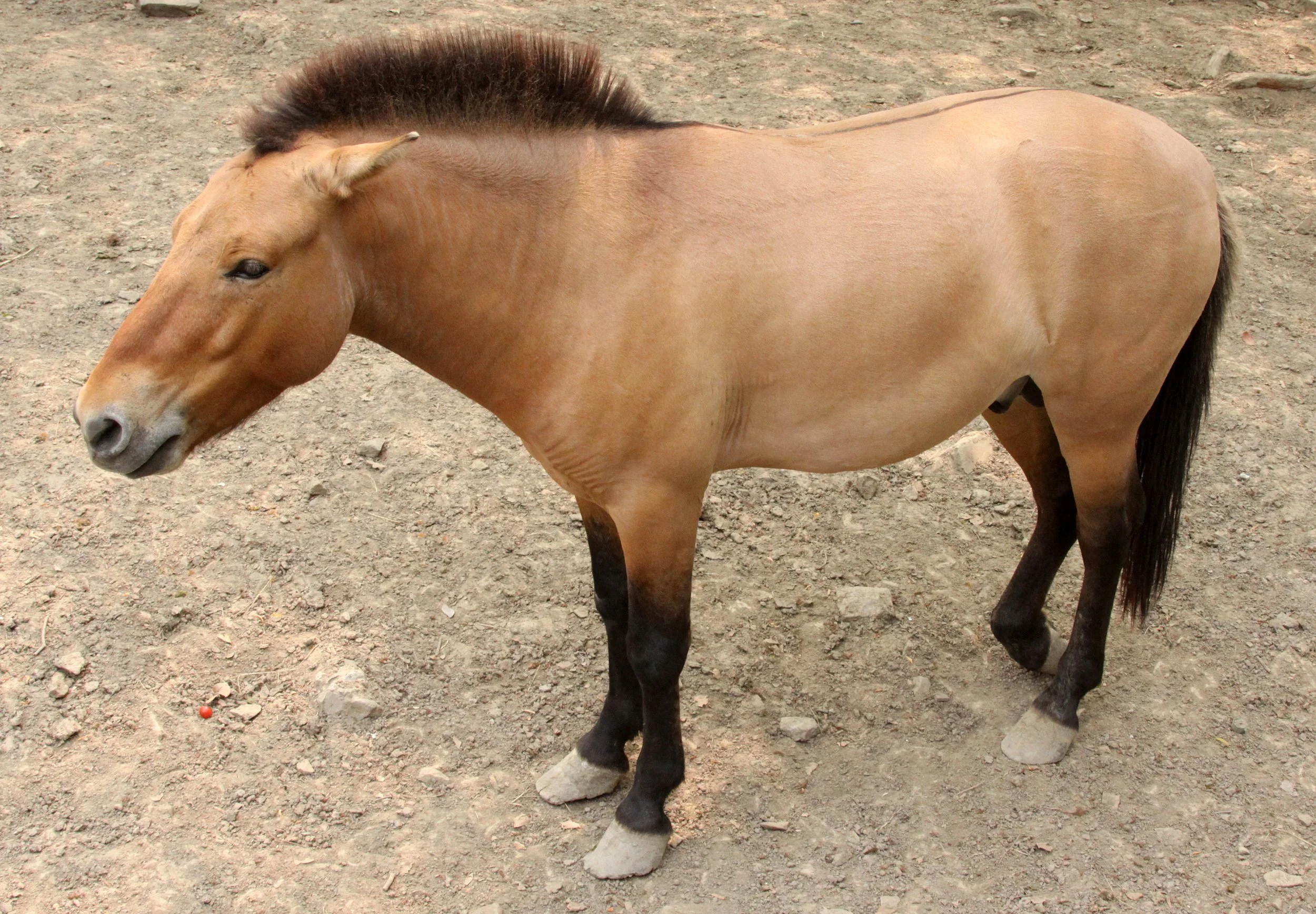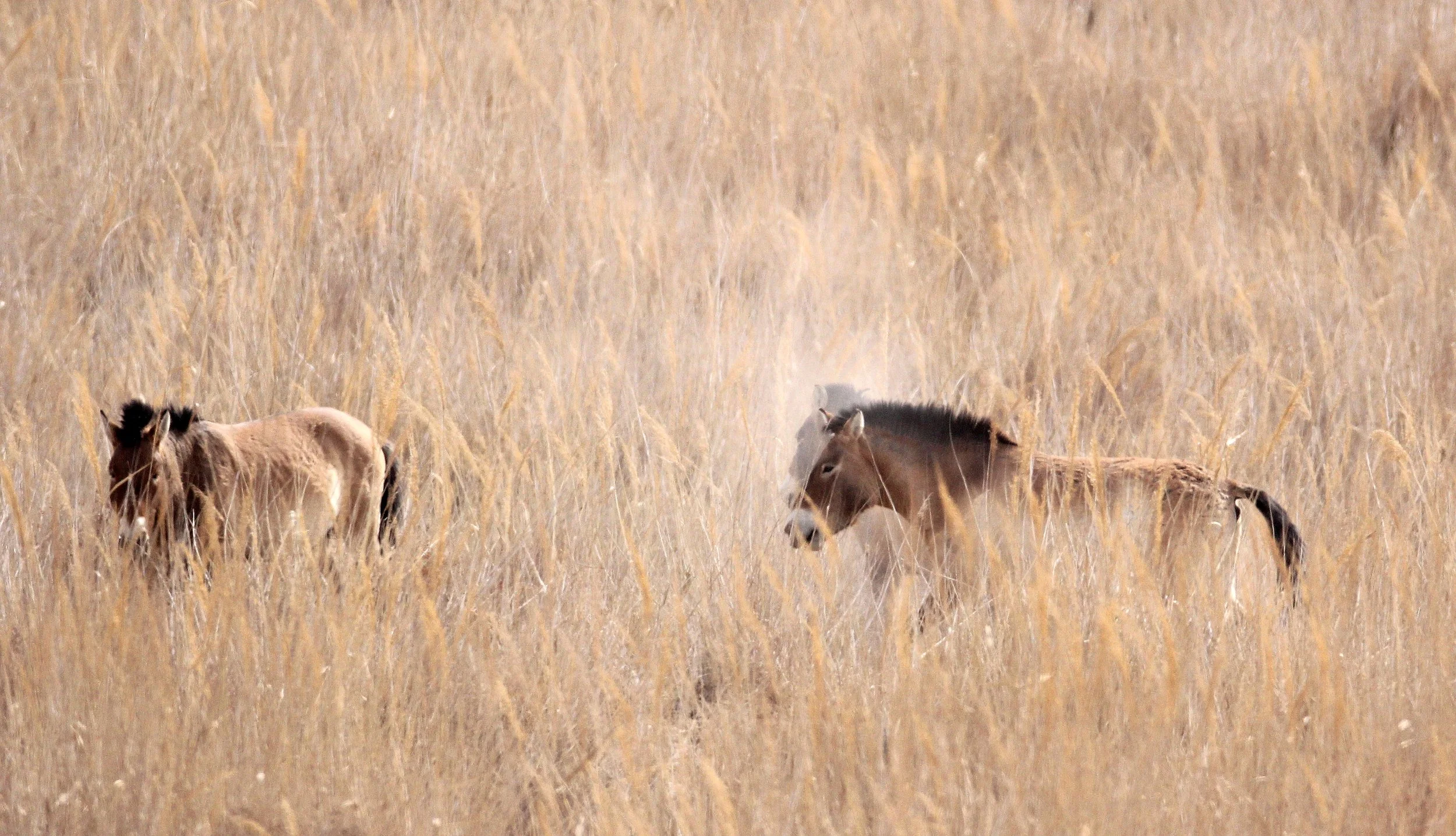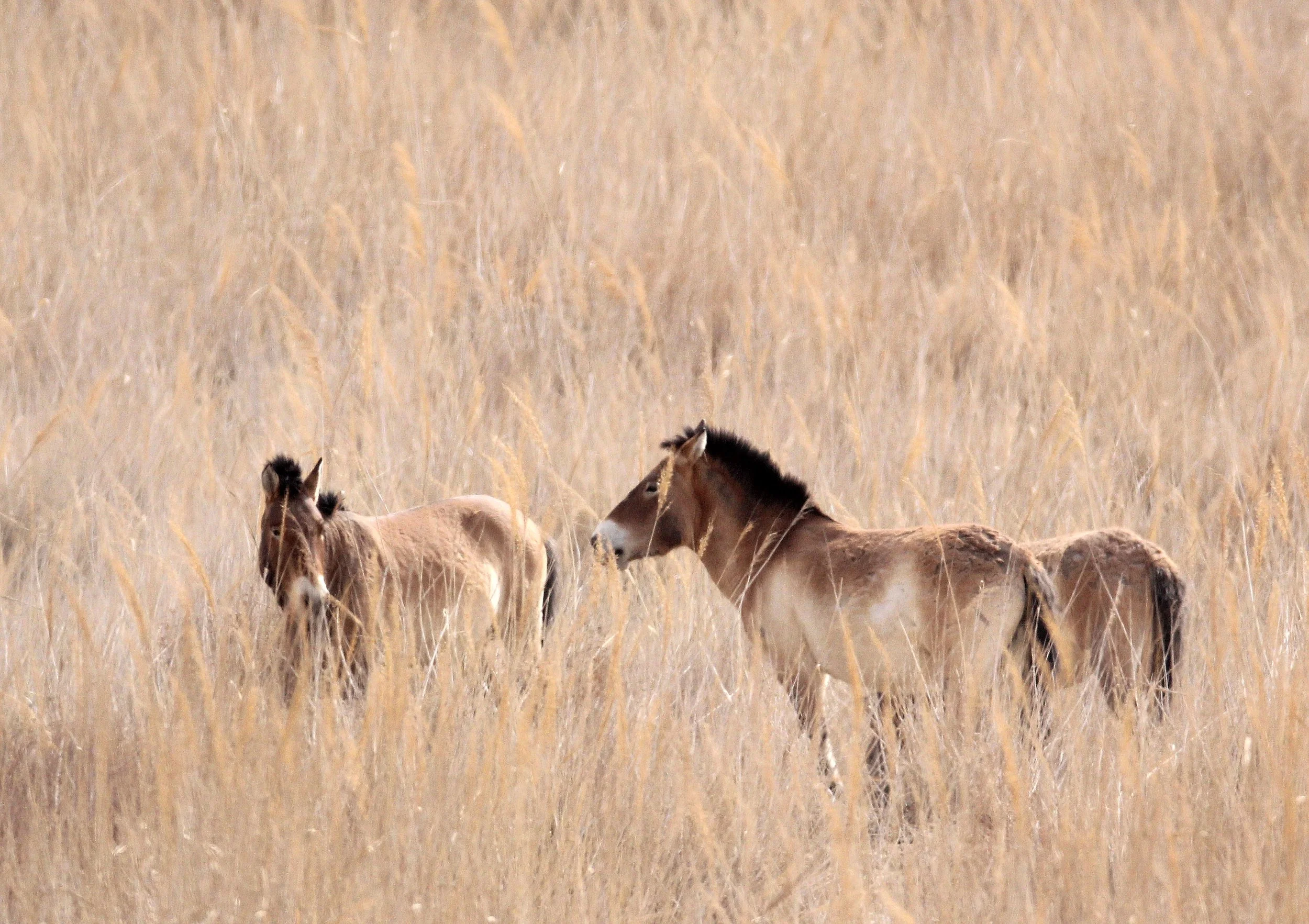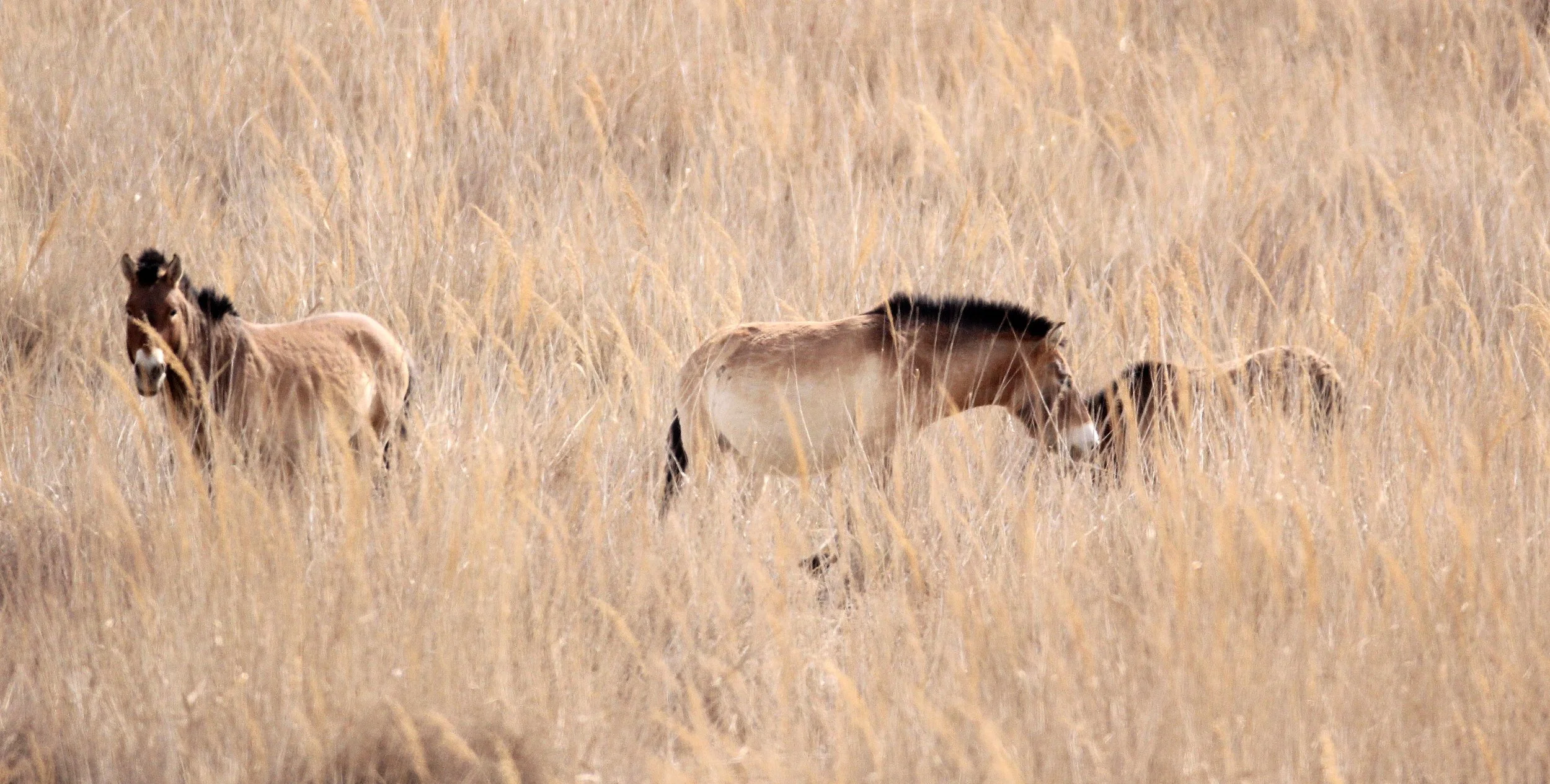Przewalski's horse (Russian: [prʐɨˈvalʲskʲɪj], Polish: [pʂɛˈvalskʲi]) (Equus ferus przewalskii or Equus przewalskii), also called the takhi, Mongolian wild horse or Dzungarian horse, is a rare and endangered horse originally native to the steppes of Central Asia. It is named after the Russian geographer and explorer Nikolay Przhevalsky. Once extinct in the wild, it has been reintroduced to its native habitat since the 1990s in Mongolia at the Khustain Nuruu National Park, Takhin Tal Nature Reserve, and Khomiin Tal, as well as several other locales in Central Asia and Eastern Europe.
Several genetic characteristics of Przewalski's horse differ from what is seen in modern domestic horses, indicating neither is an ancestor of the other. For example, the Przewalski has 33 chromosome pairs, compared to 32 for the domestic horse. Their ancestral lineages split from a common ancestor between 38,000 and 160,000 years ago, long before the domestication of the horse. Przewalski's horse was long considered the only remaining truly wild horse, in contrast with the American Mustang or the Australian brumby, which are instead feral horses descended from domesticated animals. This assumption was challenged in 2018 when DNA analysis of horse remains associated with the 5,000-year-old Botai culture of Central Asia revealed the animals were of Przewalski lineage. However, the domestication status of these animals has been questioned. Its taxonomic position is still debated, with some taxonomists treating Przewalski's horse as a species, E. przewalskii, others as a subspecies of wild horse (E. ferus przewalskii) or a variety of the domesticated horse (E. caballus).
The Przewalski's horse is stockily built, smaller, and shorter than its domesticated relatives. Typical height is about 12–14 hands (48–56 inches, 122–142 cm), and the average weight is around 300 kilograms (660 lb). They have a dun coat with pangaré features and often have dark primitive markings.
The images in this gallery are of wild individuals (reintroduced) in Dunhuang Xifu National Nature Reserve, Gansu China and Shanghai Zoo.














































